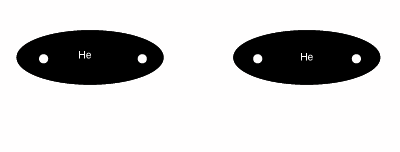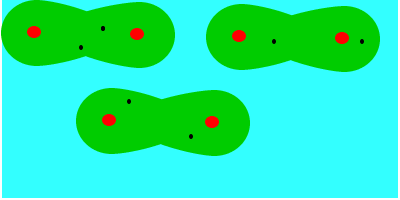Dispersion forces

The creation of instantaneous dipoles generates weak electrostatic forces of attraction between the molecules. These intermolecular forces are known as dispersion forces and are present in all molecules where electrons move at random. Dispersion forces are very weak because the charges that generate these forces are not long lasting and disappear as quickly as they are formed. Large molecules tend to have a greater number of instantaneous dipoles forming and therefore the dispersion forces acting between the molecules, weak as they may be, are slightly stronger than the forces between smaller molecules. Below is a table of the boiling points of molecules that rely only on dispersion forces to attract molecules together. Boiling points are an indicator of how strong the intermolecular forces are.
| Molecule |
Boiling
point |
| oxygen |
-183 |
| nitrogen |
-196 |
| chlorine |
-35 |
| iodine |
183 |
